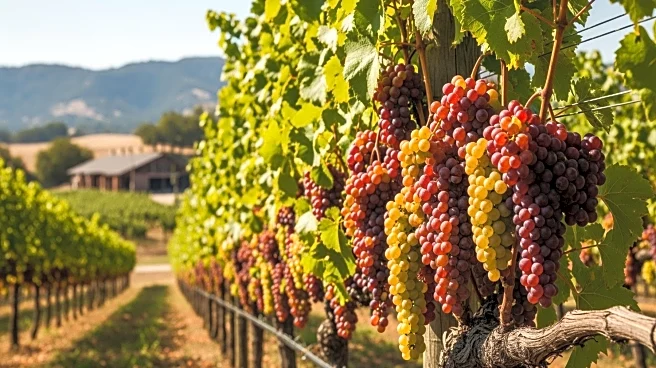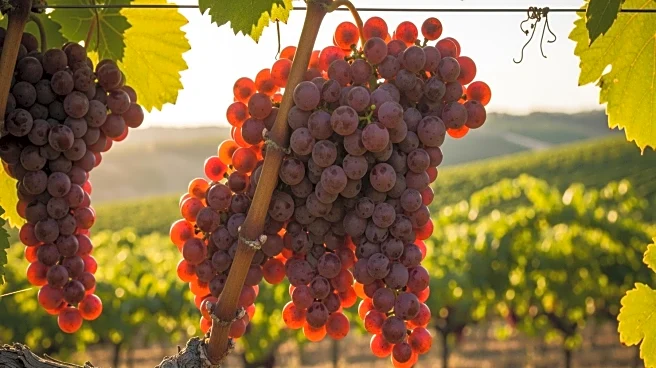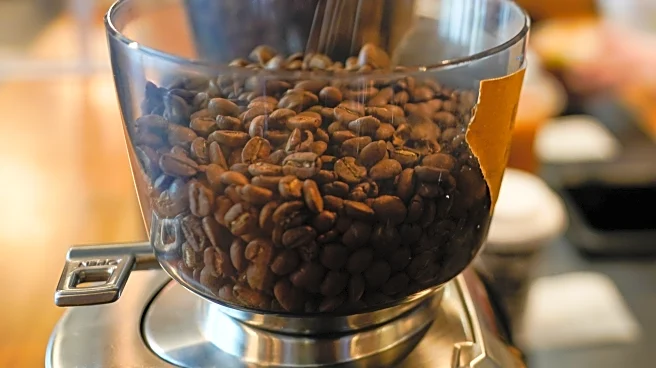What's Happening?
The California wine industry is increasingly turning to hybrid grape varieties to combat Pierce's Disease, a bacterial infection that has devastated vineyards. Adam Tolmach, a winemaker at Ojai Vineyard,
has been at the forefront of this shift, planting new hybrid varieties such as Paseante Noir and Ambulo Blanc. These hybrids, developed by Dr. Andrew Walker at UC Davis, are resistant to Pierce's Disease and represent a sustainable future for winemaking. The hybrids are a cross between European Vitis vinifera and North American Vitis arizonica, offering a solution to the challenges posed by climate change and disease pressures.
Why It's Important?
The adoption of hybrid grapes is significant for the U.S. wine industry as it seeks to maintain production in the face of increasing environmental challenges. By reducing reliance on chemical treatments, these hybrids promote more sustainable farming practices. This shift could lead to healthier vineyards and wines that better reflect their terroir. The success of these hybrids may also influence consumer perceptions, encouraging acceptance of new grape varieties and potentially reshaping the wine market. As climate change continues to impact agriculture, innovations like these are crucial for the industry's resilience.
What's Next?
As hybrid grapes gain traction, more vineyards may adopt these varieties, leading to broader changes in wine production and marketing. The industry will likely monitor consumer reactions and market demand for wines made from hybrid grapes. Continued research and development in grape breeding will be essential to enhance the quality and appeal of these hybrids. The spread of Pierce's Disease to northern vineyards underscores the urgency of these efforts, as winemakers seek to protect their crops and adapt to evolving environmental conditions.
Beyond the Headlines
The use of hybrid grapes raises questions about tradition versus innovation in winemaking. While hybrids offer practical benefits, they challenge the conventional preference for ancient grape varieties. This development may prompt a reevaluation of what constitutes quality wine and how it is defined by consumers and producers. The success of hybrids could also inspire similar approaches in other agricultural sectors facing climate-related challenges.












